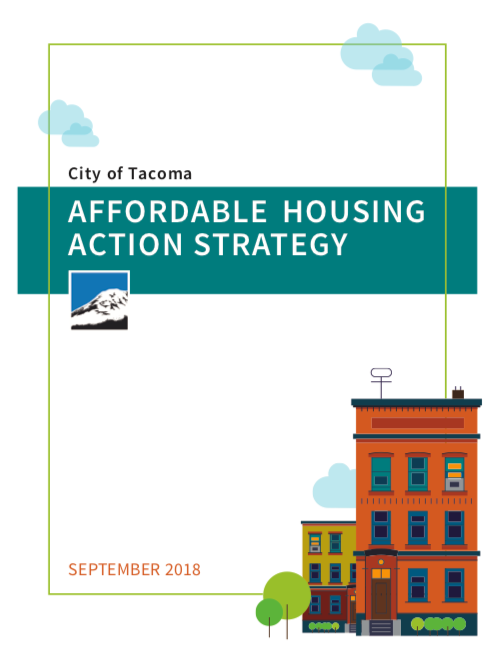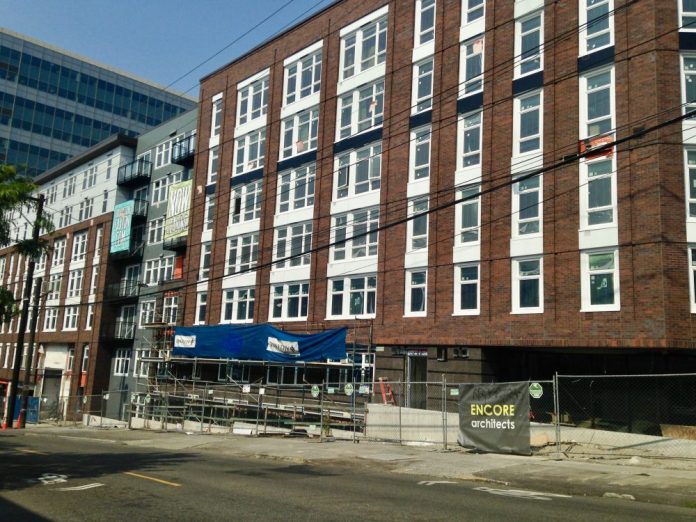It’s rare these days to hear of a piece of legislation attracting significant bipartisan support in both Washington State’s House and Senate. For that same legislation to also have won support from affordable housing advocates, real estate interest groups, developers, and local governments seems even more improbable.
But House Bill 1923, which currently sits waiting for a signature on Governor Jay Inslee’s desk, somehow succeeded in doing just that. Cosponsor Representative Nicole Macri (D-43rd District), HB 1923’s success resulted from “unlikely coalition” of supporters.
At the same time, the Seattle Times editorial board has called for Governor Inslee to veto HB 1923, a bill it claims is aimed at pleasing developers by ending the legal appeals that have slowed down ”citywide” implementation of Mandatory Housing Affordability (MHA) in Seattle.
It will be interesting to see how the dust settles on HB 1923. From the beginning success was far from certain for a bill that got its start around a controversial land use approach: minimum urban density. First kicked off by Senator Guy Palumbo (D-1st District), Washington State’s flirtation with minimum urban density followed in the footsteps of California, which with its own State Bill 50 is currently in the second round of discussions around adopting a statewide minimum urban density standard. In a nutshell, minimum urban density is a top-down approach to increasing building capacity that requires cities upzone specific areas. As in the case of California’s SB 50, transit oriented development is typically the goal since mandatory upzones are usually near transit service.
Washington State is not totally unfamiliar to minimum density mandates. In 2014, the City of Seattle passed a minimum density ordinance to prevent low-density, suburban-style development in Urban Villages, Urban Centers, and the Station Area Overlay Districts with a pedestrian designation. Even so, the Seattle Times editorial board referred to Sen. Palumbo’s original bill, as “a noxious Senate bill that failed to advance.”
While early versions of HB 1923 included statewide mandates, from the beginning its sponsor, Representative Joe Fitzgibbon (D-34th District), sought to differentiate HB 1923 from other minimum density bills by giving local governments the option to select from a menu of options to fulfill their density requirements. Rep. Fitzgibbon hoped that by providing choices, local governments would be more receptive to the bill’s requirements.
However, it became clear to Rep. Fitzgibbon that cities were not going to get on board with a bill that included what some local government officials perceived as unfunded mandates or penalties. As a result, HB 1923 shifted from mandates to incentives, although some provisions, such as protection from appeals for developments that meet certain requirements, will take effect statewide.
“Fundamentally we wanted more teeth,” said Bryce Yadon, State Policy Director at Futurewise, “but certain menu options were also too prescriptive and could not work for smaller communities and communities on the periphery.”
While having express some reservations about the strength of the bill’s policy provisions, Yadon is ultimately pleased with where HB 1923 landed. “For a bill’s first track, it establishes a good foundation,” he said.
And despite The Seattle Times complaints that “much of the bill is aimed at Seattle, where residents are in a pitched battle with City Hall and developers over whether to preserve single-family neighborhoods,” in its current form, HB 1923, Yadon expects the bill to have the most impact on mid-size cities which are already seeking to increase their housing capacity.
“It was really centered around cities of [20,000] to 100,000 [residents] to take advantage of,” Yadon said.
Emphasizes community choice in decisions to increase density
Section one of the bill includes a menu of land use actions that cities can select from in order to qualify for up to $100,000 in planning grant assistance. Cities with populations of 20,000 or more must adopt two land use actions to qualify for the grant funding; in rare instances where applications demonstrate “extraordinary potential,” they may qualify for more funding.
Funding for the planning grants comes from a document recording fee that will be charged by county auditors upon the filing of certain public documents, excluding birth, divorce, marriage, death, and deeds of trust. This fee-based revenue source also received bi-partisan approval.
Cities with populations under 20,000 that can demonstrate their actions will have significant effect on housing creation or regulatory streamlining may also qualify for planning grant funding as well.
Eligible land use actions include:
- Upzoning areas of at least 500 acres that include a commuter or light rail station;
- Upzoning areas of two hundred and fifty acres or more that include bus rapid transit (only applied to cities with a population of forty thousand or more residents);
- Authorization of duplexes, triplexes, and courtyard apartments in single-family zoned areas;
- Authorization of accessory dwelling units (ADUs) in single-family zones areas on lots that meet size requirements;
- Adoption of a subarea plan or a detailed plan for a smaller geographic area within a city;
- Implementation of planned action, some examples include a comprehensive plan, master planned development, or phased project
- Adoption of increases in categorical exemptions that encourage urban infill development;
- Adoption of a form-based code which includes zoning requirements based on physical form rather building use;
- Authorization of duplexes on each corner lot within all single-family zoned areas; and
- Allowances for subdividing lots into smaller parcels.

Housing Action Plan
Cities may also opt to implement a housing action plan in order to qualify for planning grants. According to the bill, the housing action plan must “encourage construction of additional affordable and market rate housing in a greater variety of housing types and at prices that are accessible to a greater variety of incomes, including strategies aimed at the for-profit single-family home market.”

In a nod to growing conversation around the topic of displacement of lower income residents, the housing action plan must assess “the risk of residential displacement, particularly in neighborhoods with communities at high risk of displacement.”
Some Provisions Apply Statewide
As alluded earlier, the bill contains language that would protect developments that meet certain criteria from being subject appeals. This is seen as an important feature by the sponsors of the bill–and Yadon too–since many small and mid-size cities are reluctant to pursue new developments out of the fear that might get entangled in a costly appeal process.
However, the bill contains other statewide mandatory provisions that have garnered less attention.
- Appeal protection I: Cities will be protected from administrative and judicial appeal if the development is consistent with a comprehensive plan, subarea plan, or other local development policies and reserves ten percent as affordable to low-income renters or buyers. (The percentage of affordable units can be higher if the city requires it.)
- Appeal protection II: The bill also protects new development being challenged by transportation based appeals if the development is consistent with a locally adopted transportation plan or comprehensive plan.
- Reduced parking requirements: For low-income housing developments located within a quarter mile of transit, parking requirements may not exceed one parking space per bedroom or 0.75 spaces per unit; in the case of low income housing that serves seniors or people with disabilities, parking may not be required unless specific circumstances call for it.
- Housing supply and affordability report: Washington Center for Real Estate Research at the University of Washington will prepare a data driven housing report for cities of 10,000 or more every two years.
- Supportive Housing Protection: The law requires cities to allow supportive housing to be constructed in any area that has been zoned for multi-family housing.
Cosponsor Rep. Macri, who is also deputy director of Seattle’s Downtown Emergency Service Center, was enthusiastic about these statewide provisions, including appeal protection, which she believes will make it easier to build affordable housing.
“I have developed affordable projects where SEPA appeals were used to slow down [the process] because people did not want those projects in their communities,” Rep. Macri said.
Yadon said the protection from appeal protections can be used in a manner that can be beneficial for the community, but that it’s important to make sure that impacted communities, including those at risk displacement, do not face unforeseen consequences.
“We have community members that appeal everything just to appeal everything,” Yadon said. “At the same time, we need to making sure displaced communities are heard, and that we lift up those voices in the planning process.”
The Seattle Times editorial board has called on Governor Inslee’s position as the “most pro-environment presidential candidate” as reason to veto a bill that it claims “prioritiz[es] special interests over the public’s ability to seek redress under his state’s signature environmental policy.”
Update: Since this article was first published, Governor Jay Inslee has signed HB 1923 into law. The bill will begin to take effect on July 28, 2019.
Natalie Bicknell Argerious (she/her) is a reporter and podcast host at The Urbanist. She previously served as managing editor. A passionate urban explorer since childhood, she loves learning how to make cities more inclusive, vibrant, and environmentally resilient. You can often find her wandering around Seattle's Central District and Capitol Hill with her dogs and cat. Email her at natalie [at] theurbanist [dot] org.


